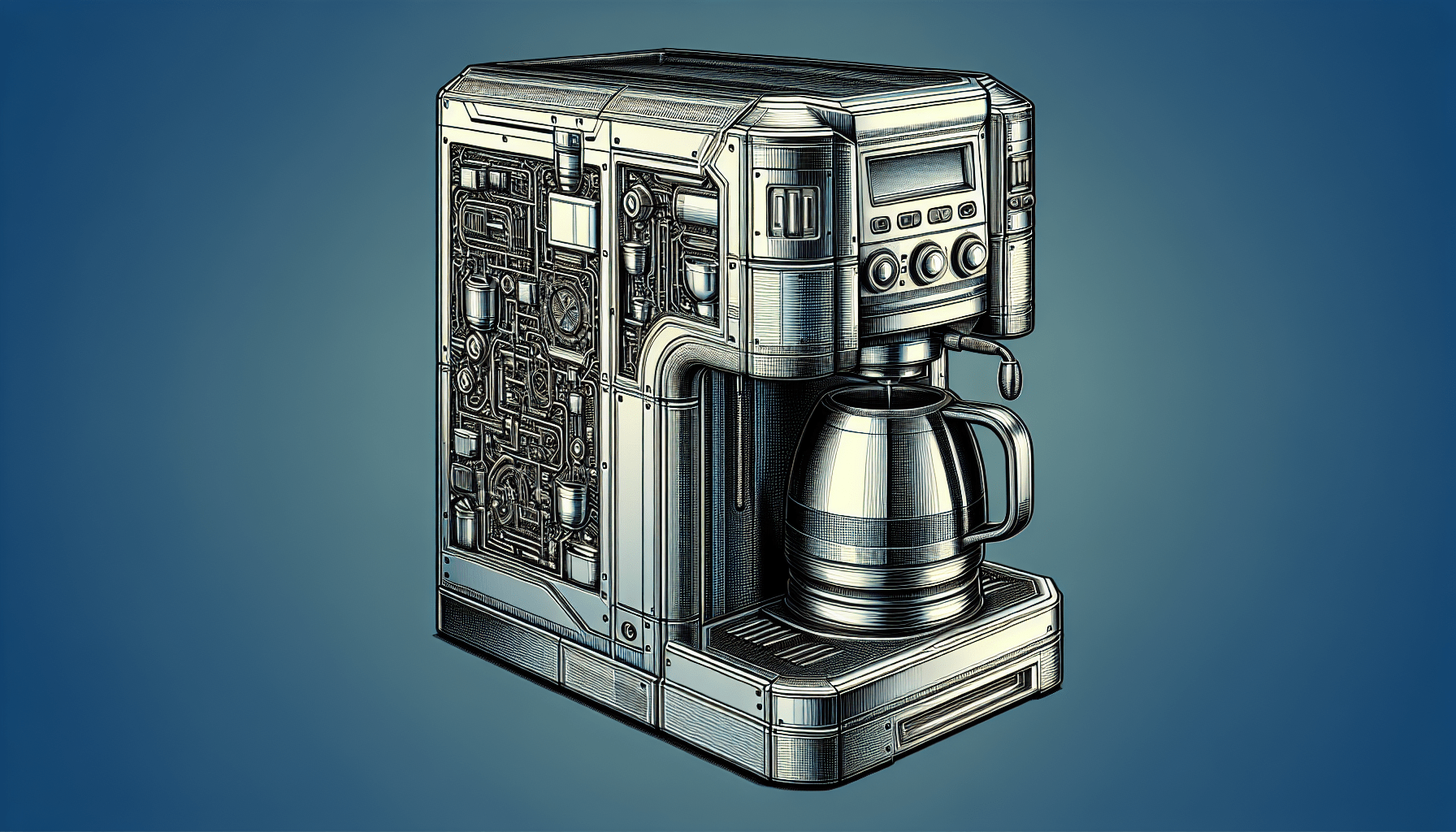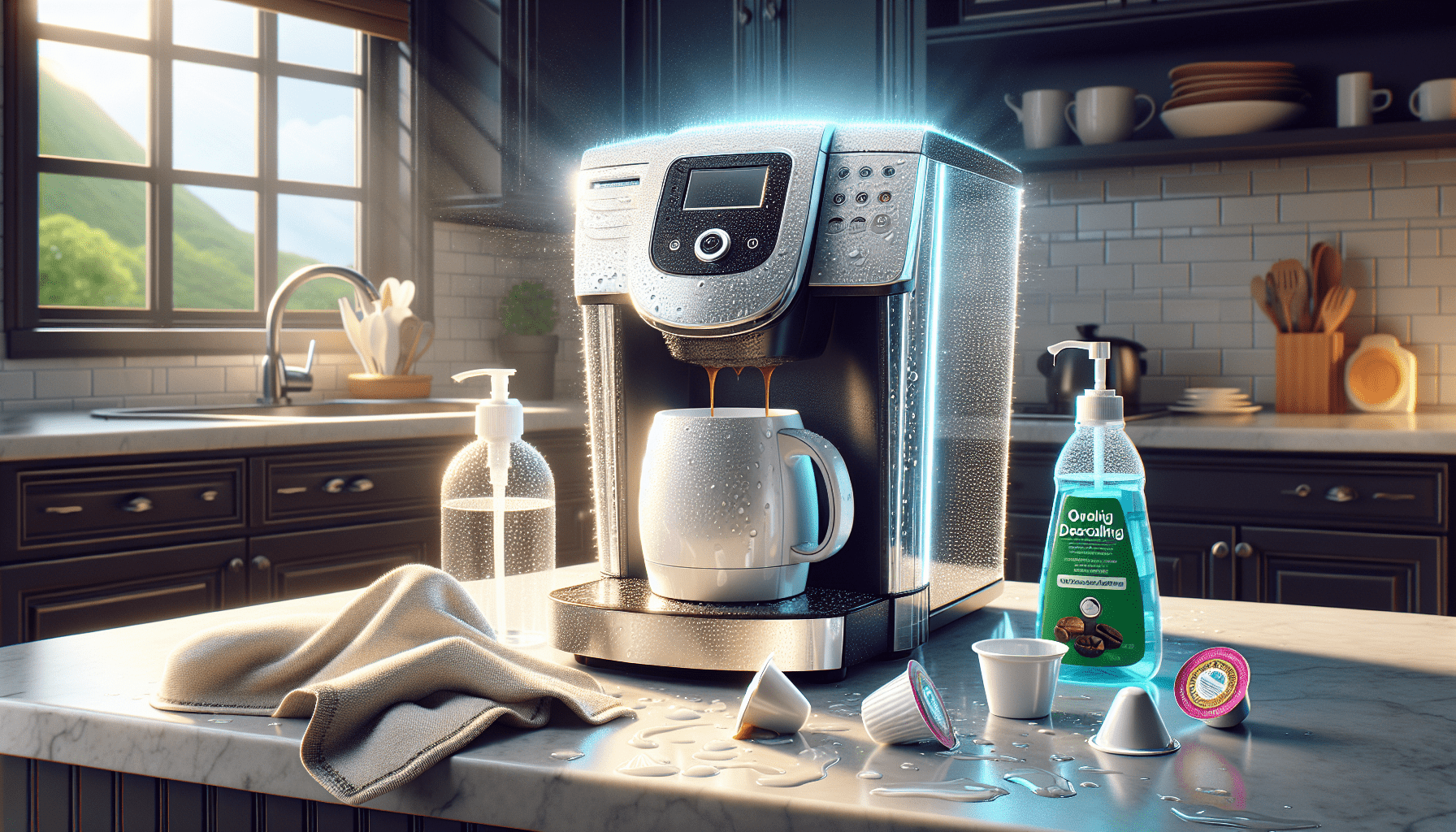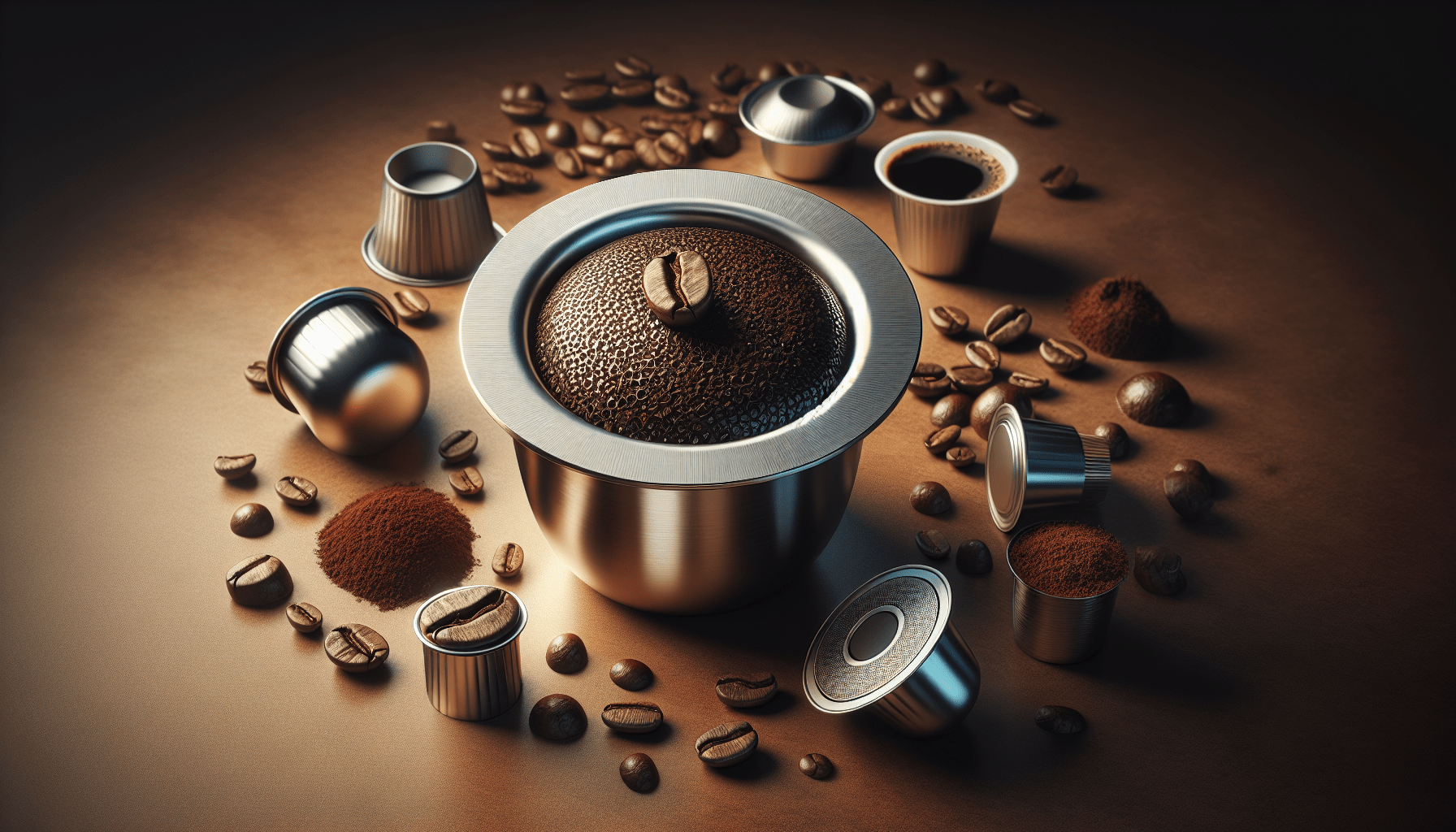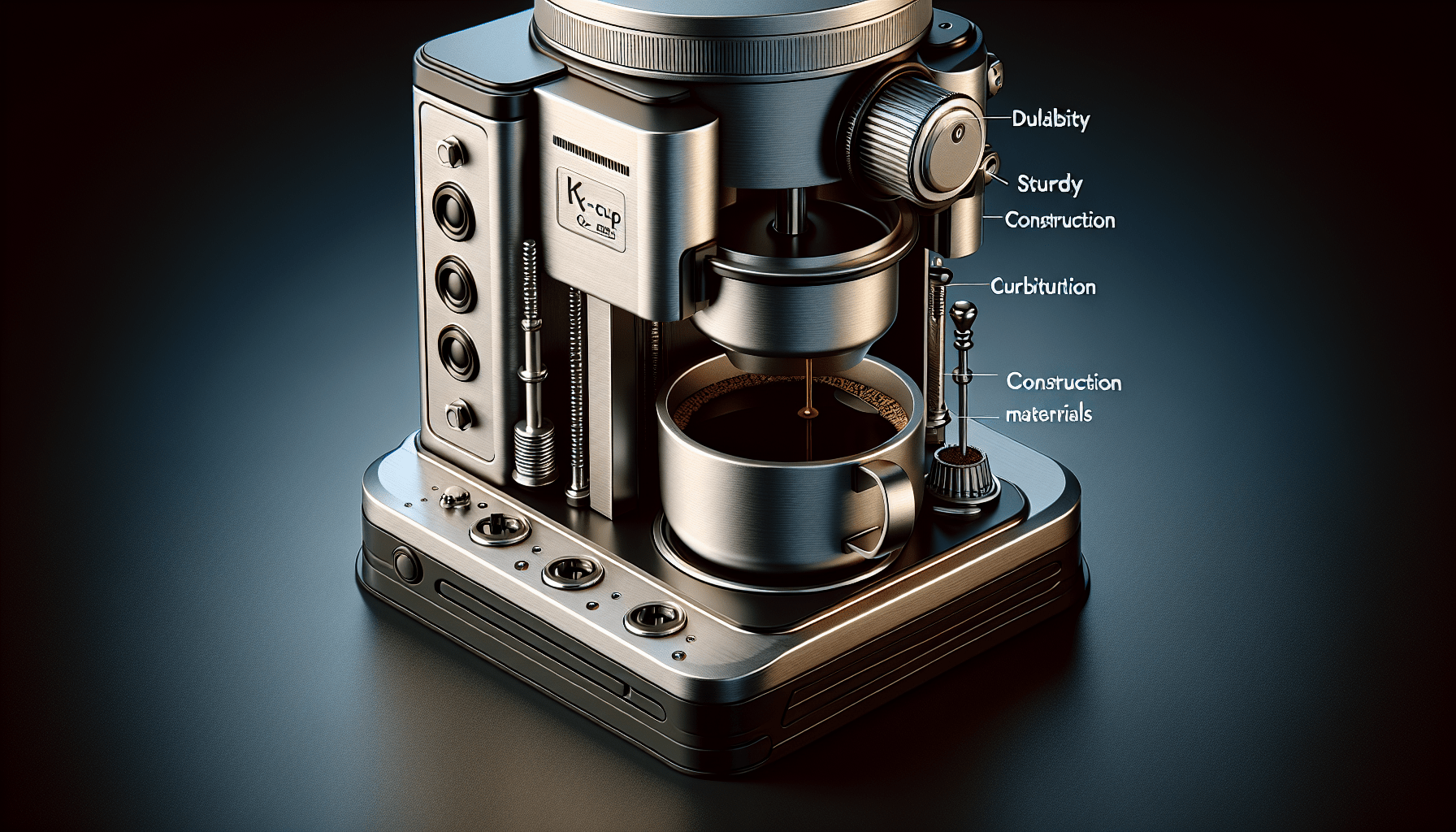Coffee lovers rejoice! In this article, we’ll explore the lifespan of K-cup coffee makers, those convenient machines that bring your favorite hot beverage to life in a matter of minutes. From morning pick-me-ups to afternoon caffeine boosts, these machines have become a staple in many households. But have you ever wondered how long they actually last? Join us as we explore the durability and longevity of these beloved coffee-making marvels. Get ready to sip and savor the knowledge that awaits!
Factors Influencing the Lifespan of K-cup Coffee Makers
K-cup coffee makers have become incredibly popular in recent years due to their convenience and ability to deliver a single serving of coffee with just the touch of a button. However, like any appliance, their lifespan can vary depending on several factors. In this article, we will explore these factors and provide you with tips on how to prolong the lifespan of your K-cup coffee maker, as well as things to consider when purchasing a new one.
Quality of Materials
The quality of materials used in the construction of a K-cup coffee maker can greatly impact its lifespan. Manufacturers that use high-quality materials, such as durable plastics and stainless steel, tend to produce coffee makers that can withstand frequent use and last for a longer period of time. On the other hand, coffee makers made with cheap or low-grade materials may be more prone to wear and tear, leading to a shorter lifespan.
Frequency of Use
The frequency at which you use your K-cup coffee maker can also play a role in its lifespan. Coffee makers that are used occasionally, perhaps only on weekends or for special occasions, are likely to last longer than those that are used multiple times a day. Excessive use can put additional strain on the machine’s components, potentially leading to premature failure.
Proper Maintenance and Cleaning
Proper maintenance and regular cleaning are essential to prolonging the lifespan of your K-cup coffee maker. Over time, mineral deposits can build up inside the machine, which can affect its performance and eventually cause it to malfunction. Following the manufacturer’s guidelines for cleaning and descaling is crucial to keep your coffee maker in optimal condition. Neglecting maintenance can lead to clogs, leaks, and other issues that may warrant the need for replacement.
Brand and Model Variations
Different brands and models of K-cup coffee makers may vary in terms of their durability and overall lifespan. Some brands are known for their superior build quality and reliability, while others may have a reputation for producing coffee makers that are more prone to breaking down. It’s important to do your research and read customer reviews to get an idea of the brand’s track record before making a purchase.
Materials Used in K-cup Coffee Maker Construction
Understanding the materials used in the construction of a K-cup coffee maker can help you gauge its durability and potential lifespan.
Plastic Components
Many K-cup coffee makers utilize plastic components in their construction. The quality and type of plastic used can vary from model to model. High-quality plastics, such as BPA-free materials, are generally more durable and less likely to crack or warp over time. Look for coffee makers that use sturdy plastics that can withstand regular use and are resistant to heat and staining.
Metal Components
Certain parts of K-cup coffee makers, such as heating elements and brewing chambers, may incorporate metal components. Stainless steel is a common choice for these parts due to its durability and resistance to corrosion. Coffee makers with metal components are generally more robust and can withstand higher temperatures, making them more likely to last longer.
Internal Mechanisms
The internal mechanisms of a K-cup coffee maker, such as the pump and heating elements, are crucial for its operation. These components can vary in quality and performance, depending on the brand and model. Coffee makers with well-designed and reliable internal mechanisms are more likely to have a longer lifespan, as they can consistently deliver hot water and maintain optimal brewing conditions.
Average Lifespan of K-cup Coffee Makers
The average lifespan of a K-cup coffee maker can vary significantly depending on several factors. Let’s delve into these factors and get a better understanding of how long you can expect your coffee maker to last.
General Range
On average, K-cup coffee makers can last anywhere from 3 to 10 years. This wide range is due to the factors mentioned earlier, such as material quality, frequency of use, and proper maintenance. Coffee makers made with high-quality materials, used infrequently, and properly maintained are more likely to reach the upper end of this range.
Entry-level Models vs. Premium Models
Entry-level K-cup coffee makers, typically priced at the lower end of the spectrum, tend to have a shorter lifespan compared to their premium counterparts. This is primarily because entry-level models often use cheaper materials and may have less robust internal mechanisms. Premium models, on the other hand, are designed to offer more durability and longevity, which justifies their higher price tags.
Varying Opinions and Experiences
It’s important to note that the lifespan of a K-cup coffee maker can also be influenced by individual opinions and experiences. Some users may have had their coffee makers last for a shorter or longer period than the average range due to specific usage patterns, maintenance practices, or other unforeseen circumstances. Therefore, it’s always a good idea to consider multiple sources of information when evaluating the expected lifespan of a particular coffee maker.
Signs That Your K-cup Coffee Maker Needs Replacement
Over time, your K-cup coffee maker may start to show signs of wear and tear, indicating the need for a replacement. Here are some common indicators that it’s time to invest in a new coffee maker.
Consistently Poor Coffee Quality
If you notice a decline in the quality of the coffee produced by your K-cup coffee maker, it may be a sign that the machine is reaching the end of its lifespan. Issues such as weak coffee, inconsistent brewing temperature, or strange tastes can arise as components wear down or become clogged.
Leaking or Dripping Issues
Leaks or ongoing dripping problems can be a strong indication that your coffee maker is beyond repair. Whether it’s a small drip or a constant stream of water, such issues can be frustrating and may render the machine impractical to use. Repeated leaks can also cause damage to your countertops or surrounding areas, making it safer to replace the coffee maker altogether.
Maintenance and Repair Costs
If you find yourself spending a significant amount of money on maintenance and repairs for your K-cup coffee maker, it may be more cost-effective to invest in a new one. As coffee makers age, replacement parts may become harder to find or more expensive, making repairs less feasible. Consider the cost of repairs and maintenance in relation to the overall value and expected lifespan of the machine.
Frequent Malfunctions
If your K-cup coffee maker is consistently experiencing malfunctions that hinder its functionality, it may be time to replace it. Common malfunctions include issues with the brew button, power supply, or display. While some problems may be fixable, frequent malfunctions can be a sign of underlying issues that may continue to persist even after repairs.
Tips to Prolong the Lifespan of Your K-cup Coffee Maker
To ensure that your K-cup coffee maker lasts as long as possible, follow these tips to prolong its lifespan:
Follow Manufacturer’s Guidelines
Always refer to the manufacturer’s guidelines for proper use, maintenance, and cleaning of your coffee maker. These instructions are tailored specifically for your machine and will help you avoid potential damage and ensure optimal performance.
Regular Cleaning and Descaling
Regularly clean your K-cup coffee maker to remove mineral deposits and coffee residue that can build up over time. Descaling, which involves using a descaling solution to remove calcium and mineral deposits, should be performed at least every 3-6 months, or as recommended by the manufacturer. This helps maintain the integrity of the machine’s internal components and prevents clogs.
Use Filtered Water
Using filtered water can help reduce the buildup of minerals and other impurities in your coffee maker. Tap water can contain varying levels of minerals, such as calcium and magnesium, which can accumulate over time and affect the machine’s performance. Investing in a water filter, either inline or pitcher-style, can help prolong the lifespan of your coffee maker.
Proper Storage and Handling
When not in use, store your K-cup coffee maker in a clean, dry place to protect it from dust, moisture, and potential damage. Avoid subjecting the machine to extreme temperatures, and handle it with care to prevent accidental drops or impacts that could lead to internal damage.
Replacing Parts vs. Buying a New K-cup Coffee Maker
When faced with a malfunctioning K-cup coffee maker, you may wonder whether it’s worth replacing specific parts or if it’s more practical to buy a new one. Consider the following factors when making this decision.
Availability of Replacement Parts
Before you invest in replacement parts, check the availability and cost of the specific components you need. Some manufacturers may discontinue parts for older models, making repairs difficult or impossible. If you can’t find the necessary parts for a reasonable price, it may be more pragmatic to purchase a new coffee maker.
Cost-effectiveness
Evaluate the cost of replacement parts in relation to the overall value and expected lifespan of your coffee maker. If the cost of parts and repairs outweighs the value of the machine or significant repairs are needed frequently, it may be more cost-effective to buy a new coffee maker that comes with a warranty and support.
Technical Skills Required
Consider your own technical skills and comfort level with performing repairs. Some coffee maker repairs may require specialized knowledge, tools, or professional assistance. If you are not confident in your ability to repair the coffee maker properly, it might be easier and safer to invest in a new one.
K-cup Coffee Maker Brands Known for Durability
When considering the purchase of a new K-cup coffee maker, it’s helpful to know which brands are known for producing durable and reliable machines. While individual models may still vary in terms of quality, the following brands have a reputation for offering coffee makers with above-average lifespans:
Keurig
Keurig is one of the most well-known and popular brands in the K-cup coffee maker market. Their machines are known for their durability and reliability, with many users reporting years of trouble-free use.
Nespresso
Nespresso is another reputable brand that offers a range of high-quality K-cup coffee makers. Their machines are known for their durable construction and consistent performance, making them a popular choice among coffee enthusiasts.
Hamilton Beach
Hamilton Beach is a brand that offers a wide range of appliances, including K-cup coffee makers. While they may be more affordable compared to some other brands, Hamilton Beach machines are still known for their durability and longevity.
Cuisinart
Cuisinart is a trusted brand in the kitchen appliance industry and offers a variety of K-cup coffee makers. Their machines are known for their solid construction and reliable performance, making them a popular choice for home use.
Breville
Breville is a brand that is synonymous with high-quality and premium appliances. Their K-cup coffee makers are no exception, often featuring durable materials and advanced brewing technologies that contribute to their longevity.
Factors to Consider When Purchasing a K-cup Coffee Maker
When purchasing a new K-cup coffee maker, there are several factors to consider to ensure you make the best choice for your needs and budget.
Budget
Determine your budget and stick to it. K-cup coffee makers come in a wide price range, from affordable entry-level models to high-end and feature-rich options. Knowing your budget will help narrow down your options and prevent overspending.
Intended Use
Consider how often you will be using the coffee maker and for what purposes. If you plan to use it multiple times a day or have a large household, a more robust and durable machine may be necessary. On the other hand, if you will only be using it occasionally or for personal use, a simpler and more budget-friendly option may suffice.
Customer Reviews and Ratings
Research customer reviews and ratings to get a sense of the performance and durability of the coffee maker you are considering. Reading about other users’ experiences can provide valuable insights and help you make an informed decision.
Warranty and Support
Check the warranty offered by the manufacturer and the availability of customer support services. A longer warranty period indicates the manufacturer’s confidence in their product’s durability. Having access to reliable customer support can be invaluable if you encounter any issues down the line.
Environmental Impact of K-cup Coffee Makers
With the rising concern for the environment, it’s essential to consider the environmental impact of K-cup coffee makers and their associated single-use pods.
Single-use Pods and Sustainability
One of the major drawbacks of K-cup coffee makers is the environmental impact of single-use pods. The plastic pods are not biodegradable and contribute to the growing problem of plastic waste in landfills. However, some brands are now offering recyclable or compostable pods as a more sustainable alternative.
Recycling and Waste Management
To mitigate the environmental impact of single-use pods, it’s important to properly dispose of them. Check with your local recycling facilities to see if they accept K-cup pods for recycling. Some brands also offer recycling programs where you can send back used pods for proper recycling or disposal.
Alternative Brewing Methods
If you’re concerned about the environmental impact of K-cup coffee makers, consider alternative brewing methods, such as using a traditional coffee maker with a reusable filter or using a manual pour-over system. These methods produce less waste and allow you to have more control over the quality and flavor of your coffee.
Conclusion
Choosing the right K-cup coffee maker and prolonging its lifespan requires careful consideration of several factors. By understanding the impact of material quality, frequency of use, maintenance, and cleaning, you can make an informed decision when purchasing a new machine. Regular maintenance and proper handling will help ensure your coffee maker remains in optimal condition for as long as possible. Remember to balance durability with affordability, and consider the environmental impact of single-use pods. By following these tips, you can enjoy delicious coffee from your K-cup coffee maker for many years to come.




